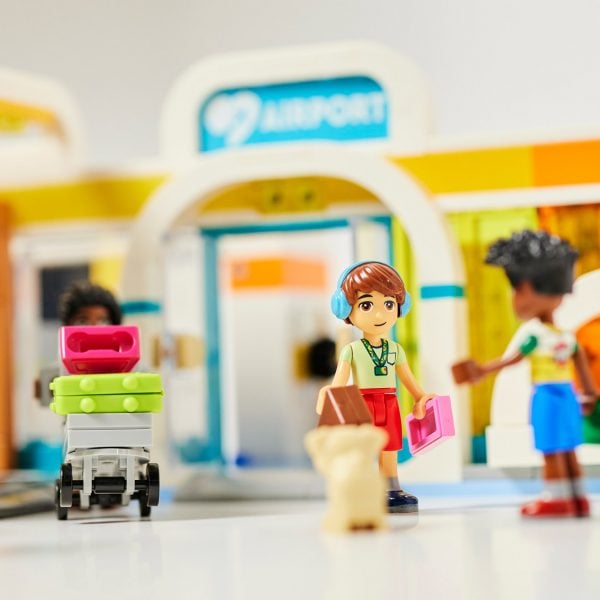Danish toymaker Lego has unveiled its first minifigures with Hidden Disabilities Sunflower lanyards, which signal that the wearer has a non-visible condition such as autism or dementia.
Lego has collaborated with the UK-based Hidden Disabilities Sunflower initiative to create three sets featuring characters wearing lanyards around their necks.
The toys were designed in solidarity with the many people of all ages who live with over 900 non-visible psychological or physical conditions, and who choose to wear sunflower-patterned lanyards in public to subtly share that they may require extra support or understanding.
The first minifigure is a young child designed for the brand’s Duplo range for toddlers. Donning bright purple trousers, the minifigure wears a distinctive sunflower-patterned lanyard and comes with a teddy bear, a suitcase and an airport check-in desk as well as a pilot and a yellow aeroplane.
“The set helps toddlers navigate feelings about airports,” said the toymaker.
Lego has also created an airport-themed set for its Friends collection for older children. It features Ryan, a smiling university student wearing an identical lanyard and a pair of blue noise-reducing headphones.

The set includes a colourful airport, an aeroplane, a taxi, a small dog and eight other characters pushing luggage trolleys.
“We did a lot of research and found that the airport was a location where wearers of the sunflower lanyard often use it,” explained Lego Friends creative lead Fenella Charity.
“So we included it in this setting as we felt it was important to represent this detail authentically,” she told Dezeen.

Designed for Lego’s Icons collection for adults, the third and most intricate set features 3,266 pieces including a towering Tudor-style building. At the centre of the set is a neurodivergent female adult minifigure who uses a sunflower-patterned lanyard.
The set features a white-coloured Lego brick illustrated with a lanyard on a shelf, which can be attached to the wall of the character’s apartment to represent where her lanyard is stored when she is at home, explained the toymaker.
Reflecting on the trio of sets, Charity said the aim is that “those who wear a sunflower lanyard will feel seen”.
“We hope those who know someone who wears it will feel connection, and those who don’t know about it yet will feel inquisitive to find out more and ask questions – to raise awareness of this symbol and what it means to the many people who wear it,” she added.
“From research, we know how important it is for children to see themselves in the toys they play with,” continued the designer.
“We feel we have a responsibility and an opportunity with our platform to work together with the Hidden Disabilities Sunflower to raise awareness, create conversation and remove stigma.”

Aside from the dedicated sets, Lego fans can also customise a wider range of minifigures with a sunflower lanyard to give players “additional opportunities to design the character they want to see themselves, a friend or family member represented as”.
Previously, Lego released five minifigures with a range of skin tones, physical disabilities and neurodiverse psychological conditions. The toy brand recently partnered with American producer Pharrell to create a space-themed Lego set.
The photography is courtesy of Lego.
